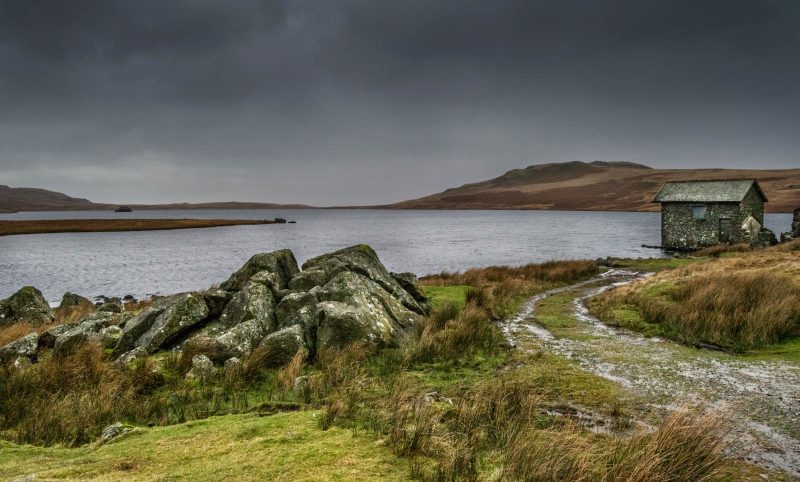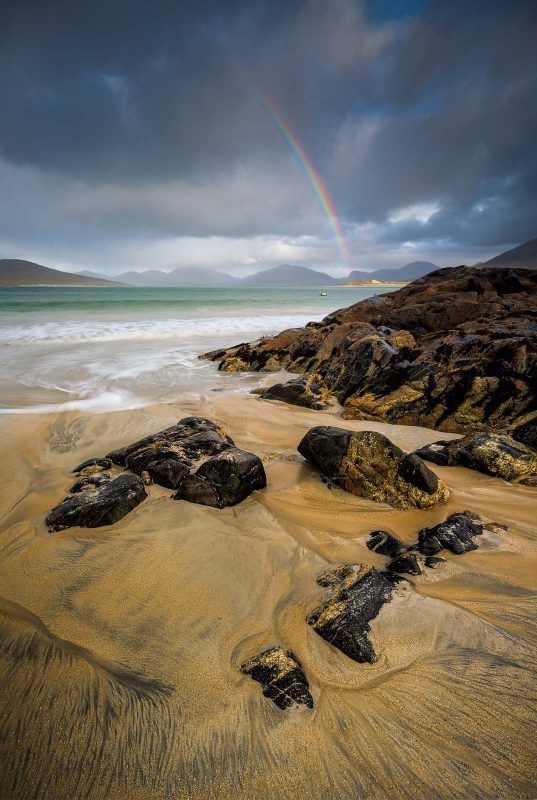Stuart McGlennon: From Amateur to Professional

In our interview series “From Amateur to Professional” we will be asking established nature photographers to share their photos and see how their practices have developed, changed, and improved over time.
You’ll get to see the progression of their images, learn how they got started, and find out how they transitioned from amateur to professional.


To see more from this series, subscribe to our free newsletter.
Stuart McGlennon is an award-winning landscape photographer based in the Lake District. His work reflects the true characters and essences of the landscapes he captures.
When not teaching or mentoring, Stuart captures the Lake Districts’ many hidden corners in often unseen ways.
When and why did you first catch the nature photography bug?
I guess it started when I took up hiking. I was looking for some form of escapism during a particularly stressful time in my life.

During that period, the unsociable working hours of my shift job in the nuclear industry meant long periods away from my partner and son, and as a family, we were coming to terms with an autism diagnosis for my then 4-year-old who has severe learning difficulties.
I took up hillwalking really as an escape from the stress and the photography just ended up being a by-product.
Having lived in the Lake District all my life I wasn’t short of interesting and beautiful landscapes to photograph, so natural curiosity took over and the rest is history!
Show us one of the first images you ever took. What did you think of it at the time compared to now?
At the time I probably thought it was amazing, not in any technical or artistic sense, just how it made me feel and the enjoyment I had making it.

It must’ve had an impact as images like this spurred me on to explore and improve. I still view my work like that now; does something I’ve taken evoke an emotional response in me? If it does then I’d probably class it as a success.
Technical skills naturally improve over time, though I’ve plenty of images from those early days that I look back on with more fondness than perhaps technically ‘better’ images that I may shoot now.
The main thing for me is the experience and the memories.
There was an element of freedom in my work back then which occasionally gets constrained by the pressures of professional photography, and in particular, the need to produce commercially saleable work in a gallery environment.
Show us 2 of your favourite photos – one from your early/amateur days, and one from your professional career. Why do you like them, what made you so proud of them, and how do you feel about the older image now?
The first is an image (below) I made about 18 months after starting landscape photography which typifies my approach at the time, which was to rail against the preconceived ideas of golden hour shooting and rather opt for shooting in the worst weather imaginable.

I loved the image (and still do) as it sums up the area I live in best – mean and moody, rather than the romanticized/idyllic idea often depicted by visiting photographers.
The second is a recent image (bleow) which I made during a particularly cold spell in the UK where temperatures dropped to -15°C. These extreme conditions are rare here and I knew I would have a limited window to capture something good.

I was kindly aided by landscape photographer and good friend Mark Littlejohn who pointed me in the direction of this area, and I couldn’t have wished for better conditions.
I was proud to capture this image as I’d stuck to my principles of exploration and wanting to create original work when it would have been easier, being based in a beautiful national park and with such a limited window, to play it safe and go somewhere more familiar.
I took a bit of a shot with this location and it paid off with an image which I think is really unique. It’s an extremely seldom-seen view with even rarer conditions to match.
When did you decide you wanted to become a professional photographer? How did you transition into this and how long did it take?
Going full-time was not on my radar really. It happened pretty suddenly in that I was a contributing artist to an existing gallery, and when the owner had to sell up suddenly, he floated the idea to me of taking over the gallery.
I weighed everything up and it suddenly dawned on me that it made perfect sense.

It would resolve the issues of seeing my family more as I hated my job, it was a route into professional landscape photography that might have taken another 10 years to achieve by conventional means, and most crucially it was financially viable.
Within 2 months I’d quit my job, gave the gallery a makeover, and started selling my work on the high street.
I’ve just passed 5 years as a professional, the shop continues to thrive and, like many other pros, I offer teaching and mentoring through residential tours and 1:1 workshops as well as commissions from time to time.
Was there a major turning point in your photography career – a eureka moment of sorts?
Probably about 6 months in, I quickly realised I was heading down the same path many others have of producing identikit imagery from the same well-worn locations.

I’m quite a driven person and embrace a challenge, and once I’d attained a reasonable level of technical proficiency, I felt that shooting those honeypot locations didn’t really challenge me.
I took no joy in producing a visually pleasing but entirely unoriginal photograph that thousands of others had. In football terms, it felt like shooting into an open goal, and while fun to do now and again it really wasn’t for me.
To that end, I basically ran in the totally opposite direction and tried to create interesting images in places that people didn’t photograph, in conditions which many other photographers shy away from.
Rather than treating the images as successes or failures, I was more concerned about the experience and how it made me feel, and building up knowledge of lesser-known areas which in the long term has been invaluable.

This approach saw my photography improve rapidly and also helped my work stand out among the many hundreds of images you see from the Lake District each year.
Are there any species, places, or subjects that you have re-visited over time? Could you compare images from your first and last shoot of this? Explain what’s changed in your approach and technique.
One key factor in landscape photography is familiarity with a location, including aspects like light direction, prevailing weather conditions, and seasonal changes. This familiarity helps me establish a deeper connection with a place and its natural rhythms.
With this foundational knowledge, I strive to approach each shoot without preconceived notions, enabling me to be more responsive to my surroundings.

I would describe my approach as flexible, combining a level of structure in terms of light direction and weather planning, but also being flexible in the type of images I might make.
I find this approach allows me to create my best work and why virtually all of my best images are largely ‘off the cuff’ to an extent rather than the result of meticulous planning.
This is something that has evolved over time. In the early days, I would plan in far more detail the exact composition I wanted to shoot.
While this approach has its merits in certain scenarios, your hit rate is likely to be quite low if you get too set on attaining the ‘perfect’ shot with all the ingredients slotting into place. It’s a rare day in the landscape everything lines up for you.
Has anything changed in regard to how you process and edit your images?
Like many people over time, I’ve dialled back the processing somewhat, mainly the result of changing tastes but also a better understanding of colour.
I probably had far too much contrast in my images early on, though I don’t really look back on those things as negatives, but more as a reflection of where one is at that stage in time. Styles and approaches change and I’m no different.

Though what I would say is at my core I want my work to reflect reality and be representative of what I saw and felt at the time of capture. The processing methods may change slightly over time, but ultimately I want my work to reflect the landscape in its natural form.
My instinct is always to try and get out of the way and let the landscape be the star of the show, not how far I can push my Photoshop skills or force a ‘style’ on a scene.
What was the biggest challenge you faced starting out, and what’s your biggest challenge now?
Probably something which continues to this day is convincing myself that professional landscape photography isn’t a dead end as a career.
It’s getting harder and harder to make money from professional photography across all sectors and landscape is no different.

I was always confident my work was good enough, but ‘good enough’ within the relatively small niche of landscape photography doesn’t necessarily equate to commercial success, especially when selling to a tourist market.
Your peers who may love your work ultimately aren’t the ones who buy it.
There are many ways to make money from photography, though my method (a shop front on a high street) I’ve learned over the years has as much to do with giving people what they want as producing what we as photographers consider to be quality work.

Quite often the two don’t marry up, so for me it’s a case of being adaptive to what my market is telling me.
So I guess my biggest challenge continues to be the balancing act of producing work which inspires me, whilst also producing work which sells to a broad audience.
The ideal scenario is to get both to cross over, but that’s not always possible!
What’s the one piece of advice that you would give yourself if you could go back in time?
I would say that it’s not a race or a competition. Just because someone else is doing well doesn’t make you a worse photographer.
Social media wants to almost pit photographers against each other in an endless cycle of likes and follows, but over time I’ve learned that focusing on that just isn’t sustainable.
I’ve seen so many photographers head down that road of hype and marketing and have ended up burnt out or quit altogether.
Just do your best, and if there’s an audience for your work and it’s good enough, then it’ll find its way. Don’t force it.





